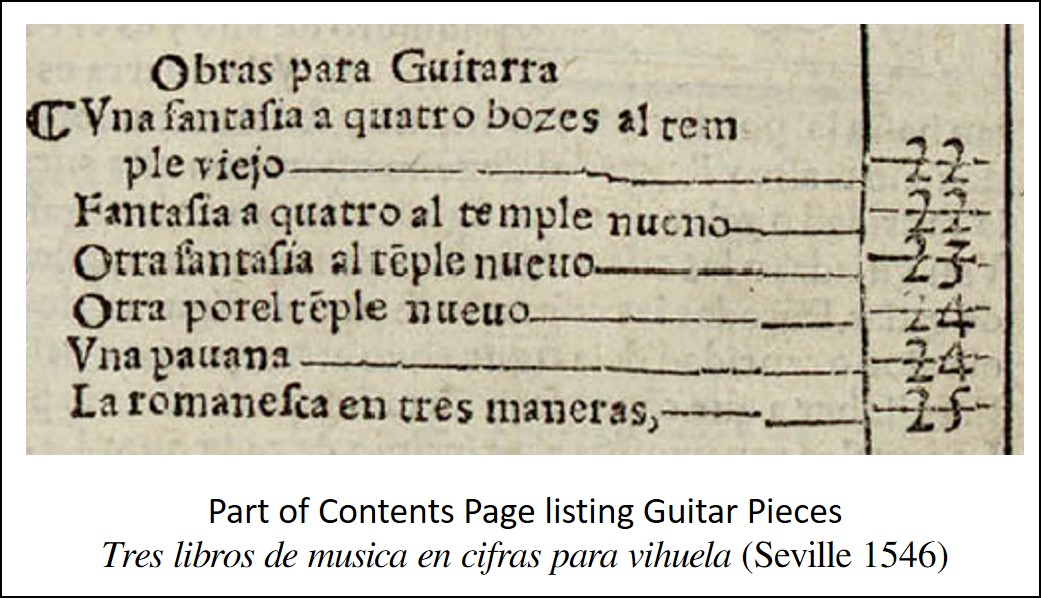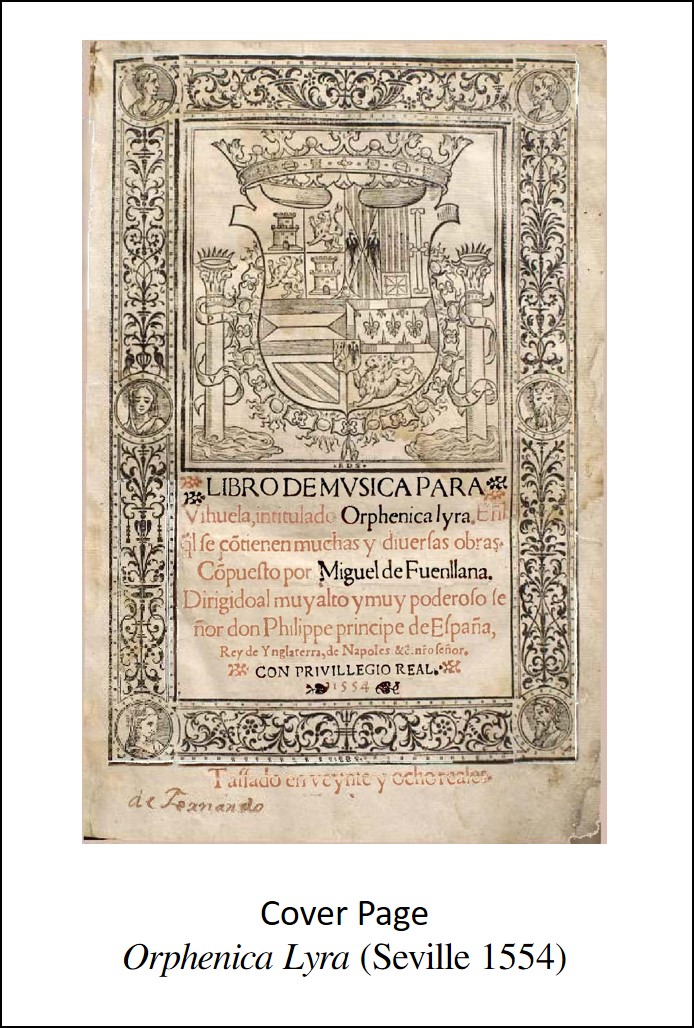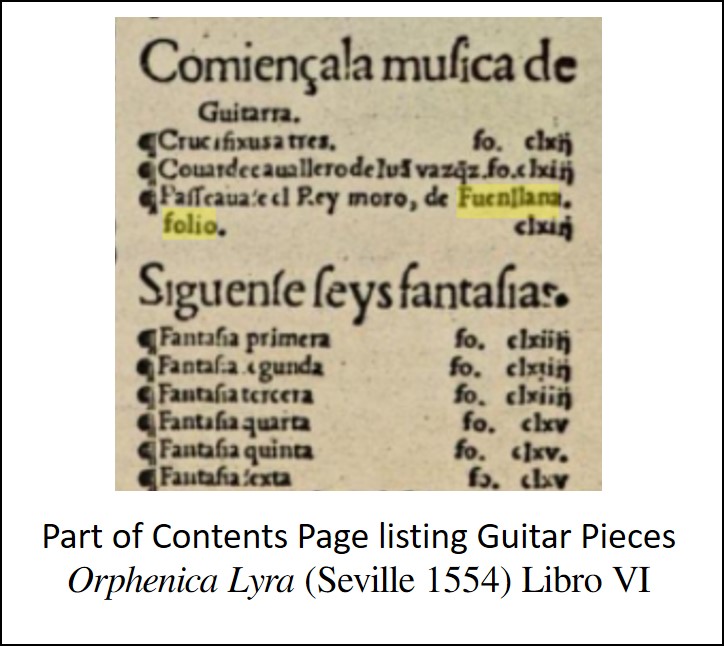All sources are Wikipedia.
All of the pieces written by Alonso Mudarra (ca 1510 – 1580) and Miguel de Fuenllana (ca 1500 – 1579) for the four-course guitar (now known as the Renaissance guitar) are arranged and included in this book.
NOTE that the original folios use Italian tablature (as opposed to French tablature used by Le Roy and in common use today, including this book of arrangements). The tablature lines are arranged such that the bottom line on the printed page represents the highest pitched (1st) string on the instrument, and the top line represents the lowest pitched string. Italian tablature uses numbers to represent the frets of the instrument. Read more about tabulature/tablature.
Alonso Mudarra (ca 1510 – 1580) was a Spanish composer of the Renaissance, and also played the vihuela, a guitar-shaped string instrument. He was an innovative composer of instrumental music as well as songs, and was the composer of the earliest surviving music for the guitar.
Mudarra wrote numerous pieces for the vihuela and the four-course guitar, all contained in the collection Tres libros de musica en cifras para vihuela (“Three books of music in numbers for vihuela”), which he published on December 7, 1546 in Seville. These three books contain the first music ever published for the four-course guitar, which was then a relatively new instrument.
Compositions represented in this publication include fantasias, variations, tientos, pavanes and galliards, and songs. Modern listeners are probably most familiar with his Fantasia X, which has been a concert and recording mainstay for many years. The songs are in Latin, Spanish and Italian, and include romances, canciones (songs), villancicos, (popular songs) and sonetos (sonnets). An innovation was the use of different signs for different tempos: slow, medium, and fast.


Miguel de Fuenllana (ca 1500 – 1579) was a Spanish vihuelist and composer of the Renaissance.
Little is known of his life. It is assumed from his name that his roots lie in the municipality of Fuenllana, in the province of Ciudad Real, although he was born in Navalcarnero, Madrid. He was blind from birth and servied in the Spanish court to Philip II of Spain and Isabel de Valois, third wife of Philip II. He later served Don Sebastian of Portugal in Lisbon starting in 1574.
He published a Libro de música para vihuela intitulado Orphenica Lyra (Seville, 1554), known briefly as Orphenica Lyra, with 182 pieces in six volumes. His style is polyphonic and he was adept at finding apt harmonies and counterpoint to popular melodies. The fantasies written for the four-course guitar are designated as easy (facile) or difficult (dificil).


